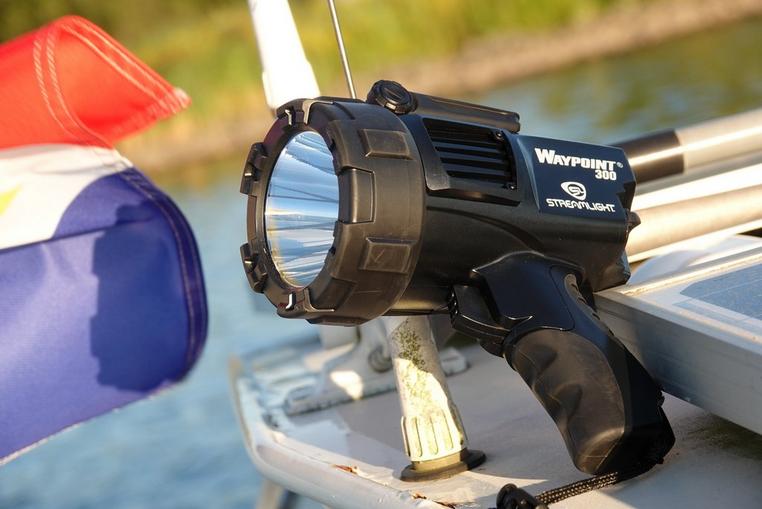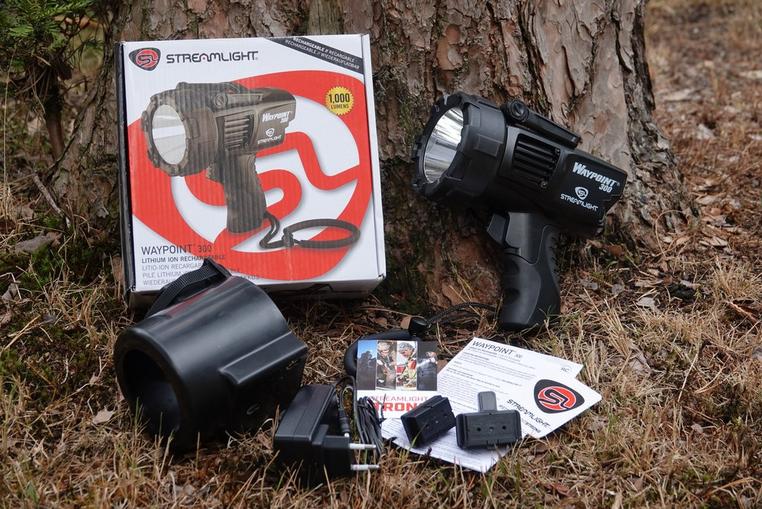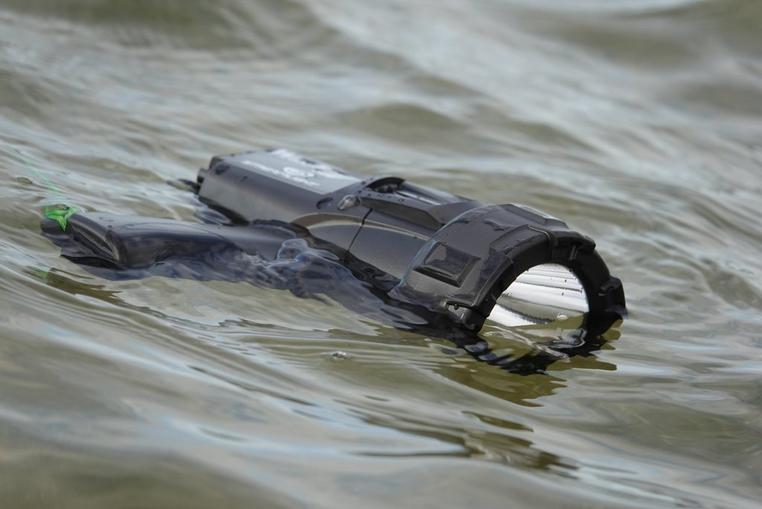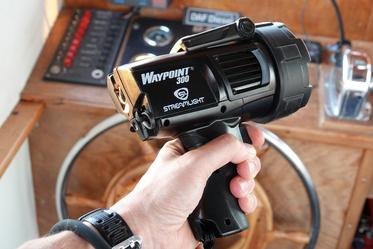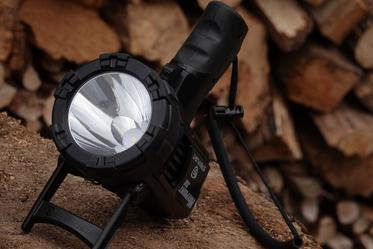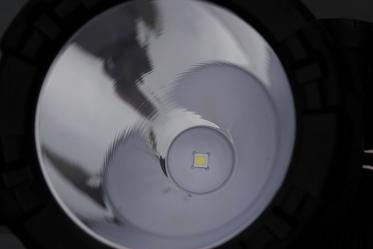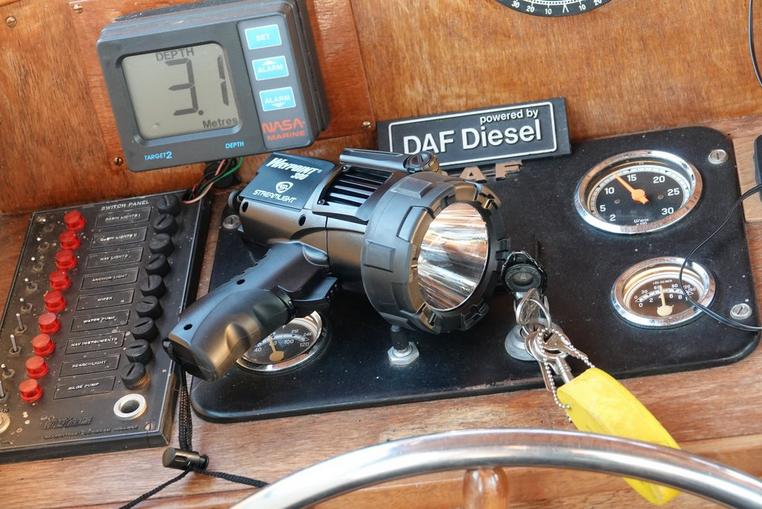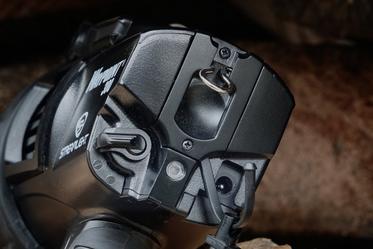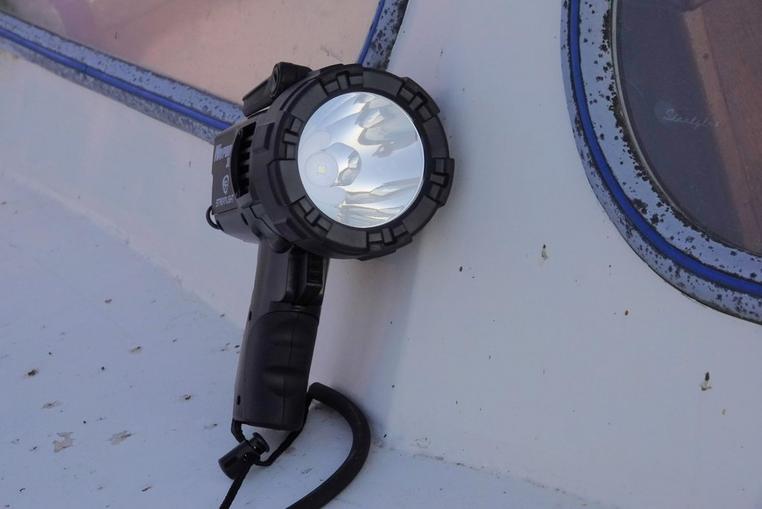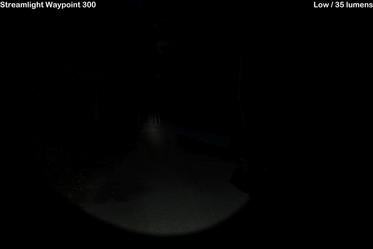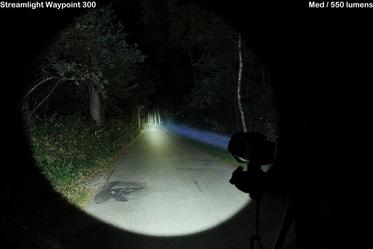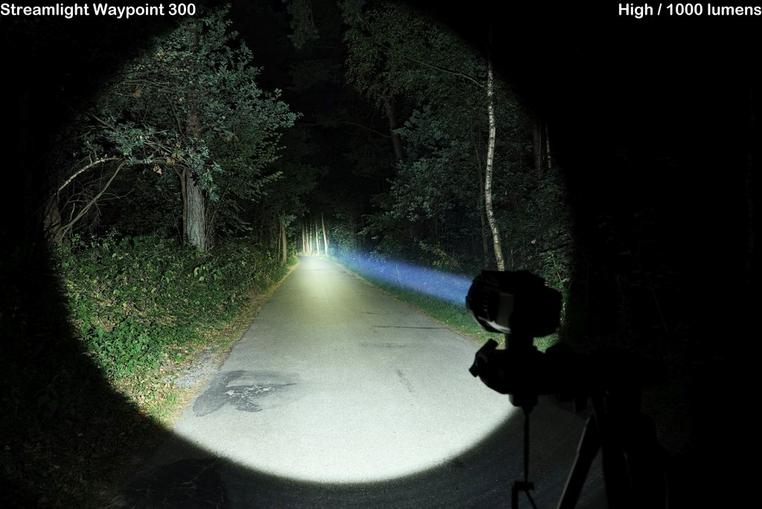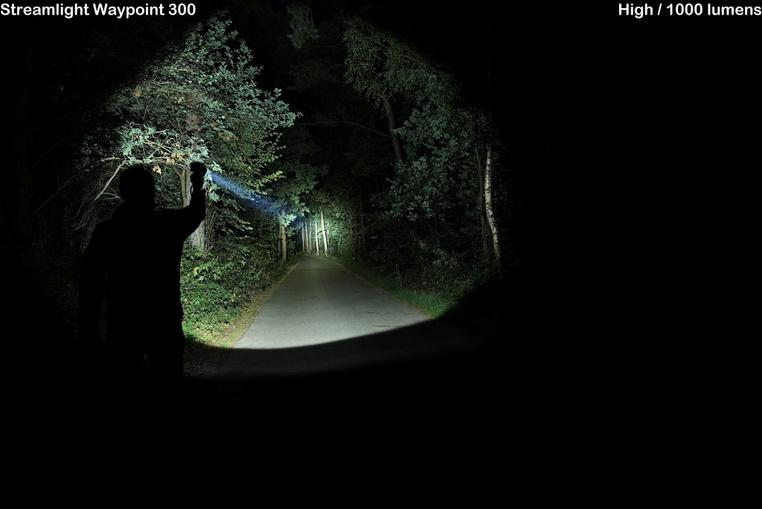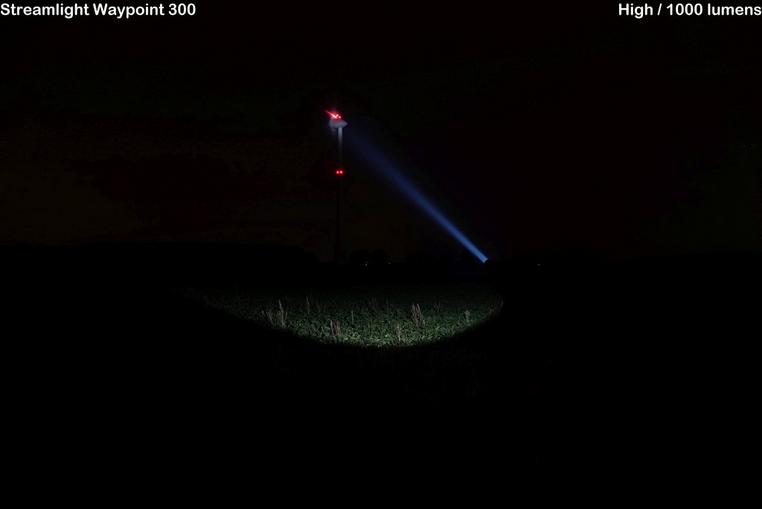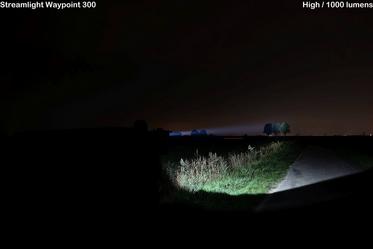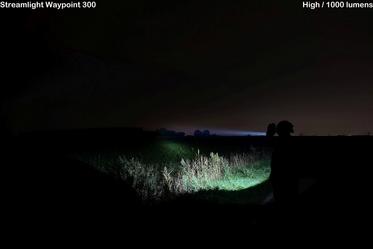Streamlight Waypoint 300 | Expert Review by Koen van der Jagt
The basic design of portable spotlights has stood the test of time and has barely changed over the years (apart from the light source and type of battery). What's the secret behind its success? Time to test the Streamlight Waypoint 300!
Contents
My first impressions
The Waypoint 300 comes in an easy-to-open cardboard box. Inside this box, you'll find a charger with international plugs, which you don't see often. With these plugs you're able to charge this light in the EU, UK and the USA. A wall mount is also included, but that's about it for the contents of this box. Sufficient, but not excessive.
One thing that’s interesting about the Waypoint 300, especially compared to other spotlights, is that its housing barely contains any metal; it’s made from high-impact polycarbonate. This immediately explains the reason behind one of this spotlight's strongest selling points: it floats! Naturally, I wanted to test that, and I threw the spotlight into the local river (after making sure that it would wash up on shore). My concern that things might go wrong turned out to be unfounded, the light stayed perfectly afloat!
With this handheld spotlight, Streamlight did not go out of its way to make the light as compact as possible. The Waypoint is a pretty large and relatively heavy light. Still, it feels great in hand, and you have the option of holding the spotlight with two hands. This is possible thanks to the integrated stand (a feature that allows you to work hands-free), which also functions as an extra handle. The weight distribution is great, which prevents hand fatigue and allows you to steadily aim the light wherever you want. The large lamp head is a real eye catcher, with its rubberized lens ring and its very deep and smooth reflector. The reflector in combination with the small and flat LED betrays that this is a light capable of long distances. At the back of the light you’ll find the charging port with indicator light and the position switch The switch that turns the light on and off can be found in the pistol grip. What also stands out about this light are the many mounting options: both the top and the back feature suspension eyelets.
I find it surprising that, despite the use of plastic materials, this spotlight has a very solid housing. It may look a little 'bulky', but in practice, it's very useful.
When and how
The fact that this product is described as a 'handheld spotlight' already reveals what this light is best suited for. Some examples: search and rescue or security and surveillance, but this spotlight also comes in handy on a ship. Although you can also use the Waypoint 300 around the house thanks to its low setting, this light is at its best in situations it was made for: reaching long distances.
How is the Streamlight Waypoint 300 in terms of controls and comfort
I have developed the habit of fully charging a light before trying it out. You can only charge the Waypoint 300 with the included charger, which does come with various international plugs. One disadvantage of a model-specific charger, compared to a USB charging port, is obvious: if you lose or forget your charger you have a problem. Fortunately, Streamlight's accessories are easy to find.
The controls are very intuitive: with the 'pistol grip' you switch on the light. Press the trigger down halfway for a momentary-on, and press the trigger down completely to switch the light on continuously. On the left side of the back, you'll find a rotary switch to select a light mode. The practical thing about this switch is that you always switch the light on in your pre-selected mode, and it’s easy to adjust brightness when necessary. The ease-of-use will undoubtedly appeal to many users. The Streamlight Waypoint 300 'only' has three light modes, it doesn't have a flashing/strobe mode. Personally, I would have appreciated a strobe mode. You can't see the battery status as you're using it, so it's best to charge the light regularly. It's most convenient to give these types of lights a permanent charging location, using the wall mount that's included.
Thanks to the large size of the switches and the handle, the Waypoint allows itself to be operated with precision; you can't really get it wrong. The light is quite substantial in terms of size and weight. This is no problem though! Thanks to the handle, you can use both hands to carry the spotlight, so it'll be less tiring to carry it.
This is what I love about the Streamlight Waypoint 300
The no-nonsense controls are a strong point of this spotlight; they're very intuitive. What's also great is how this light has an excellent range while still providing sufficient light at close range. A floating light is something you don't come across often. The fact that you won’t lose the light should it fall in the water is a huge advantage!
This could be better
I wish I could check on the battery status during use. Despite the spotlight being battery-efficient, you don't know exactly how long your battery charge will last you. Unlike my 'old' handheld spotlight, the Waypoint 300 lacks a strobe function. A strobe mode is something that's especially useful for foresters and security personnel.
Value for money?
Streamlight is not a cheap brand, but it is a brand that has proven its worth for years. The Waypoint 300 is an investment you can enjoy for years to come. This fact and the amazing features of this light justify the purchase price, in my opinion.
My conclusion
The Streamlight Waypoint truly is a beast of a light. Robust and impact-resistant, waterproof, buoyant, and it also has a huge reach and plenty of light at shorter distances. A must-have on a boat, in the car or on a surveillance round. To make the light even better, I would like to see a strobe function and a USB charging port.
Last, but not least: the beamshots
One of the first things I always do when testing a new light is pointing it at a white wall or ceiling, to get an impression of the light display. The Streamlight Waypoint 300, with its large and deep reflector, gives a fairly small and intense beam, surrounded by a surprising amount of residual light, or spill. As such, you don't just have an amazing range, the light also gives you enough light to work with up close. You can clearly see this in the pictures of the beam shots below, which I took in a dark forest at the Veluwe. The huge difference in output between the low and medium light modes is notable. The colour is nice and white, and doesn't contain a blue hue.
The same location, now with the light in hand. Especially on these kinds of roads, you benefit tremendously from the reach of the light beam while also being able to see what is happening on the side of the road.
The second location is in the polder; here we can better test the reach of the spotlight. The wind turbine is about 500 metres away; as you can see, the Waypoint has no trouble at all lighting it up.
Even with a bit more light pollution, the Waypoint reaches respectable distances with ease. Again, you can see that the light still illuminates a decent area even at the shorter distance.
Koen van der Jagt
Ever since he could walk Koen has been interested in lights, wires and batteries. As a child he was always working with dyno torches, bike lights and electrical boxes. The krypton and halogen lights were replaced by LED lights. A couple of years ago he discovered the ‘professional’ stuff. His first brands were Led Lenser and Fenix. Photography is also one of his hobbies. In addition to nature and meteorology Koen loves to show others what a light can do and what its beam looks like at night. Koen’s reviews can often be found on forums such as candlepowerforums.com and taschenlampen-forum.de. Throughout the years Koen has collected lights in practically any category: from small and compact to enormous powerhouses.

